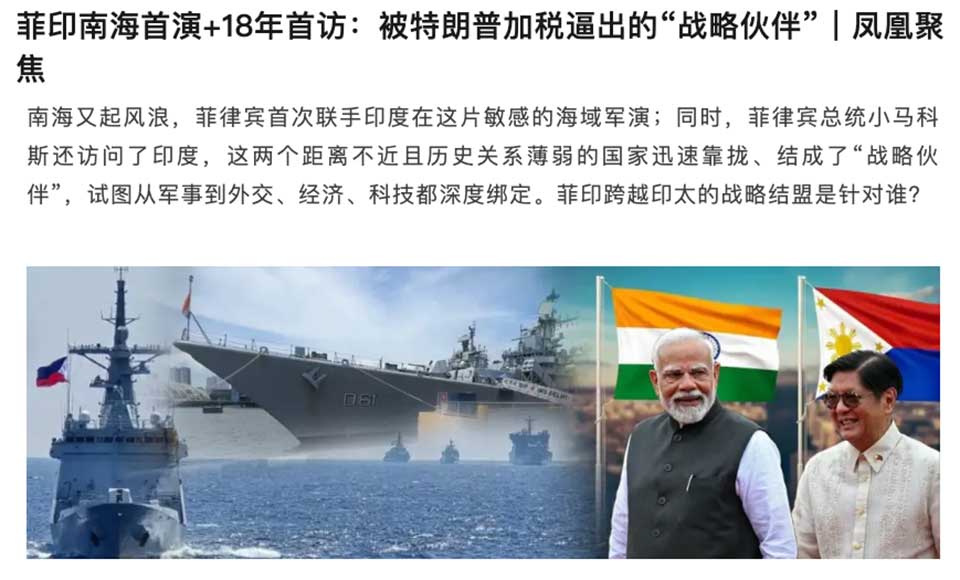
As India and the Philippines held their first-ever joint naval exercise in the South China Sea on August 3–4, Chinese social media lit up not with surprise, but with sarcasm. The timing was key: both countries had just been hit with punishing U.S. tariffs.
India, once hailed by U.S. officials as a key strategic partner, had just been hit with fresh American tariffs in response to its ongoing energy imports from Russia. Meanwhile, the Philippines—whose semiconductor sector represents 70% of its exports—was rocked by the Trump administration’s sudden plan to impose up to 200% tariffs on all foreign chip imports, including those from the Philippines.
Chinese media and analysts quickly framed the move as two U.S.-leaning countries holding each other for warmth after being punished by the very partner they sought to align with.
One widely shared WeChat article, titled “Offend China, Get Throttled by the U.S.: Is Hugging India Going to Save the Philippines’ Collapsing Chip Industry?”, captured the prevailing mood.
The piece argues that the Philippines had already lost access to the Chinese chip market amid worsening ties. It mocked Manila’s recent effort to buy Indian missiles as a way to pull India into the South China Sea dispute and gain backing. However, with the U.S. turning protectionist and India itself falling out with the U.S., the author questioned whether India would offer real help, or just sell missiles.
Why is This Important?
Chinese nationalist voices online have long viewed India and the Philippines as thorns in China’s side, especially over the South China Sea and border issues.In Chinese discourse, these tensions are often portrayed as the result of both countries “tilting toward the U.S.” and undermining China’s regional interests.
Now, with both nations facing economic punishment from Washington and turning to each other for symbolic military cooperation, Chinese netizens are responding with a mix of schadenfreude and nationalist satisfaction. The episode is being interpreted not just as a diplomatic irony, but as evidence that U.S. alliances in Asia are fragile, short-term, and driven by self-interest.







